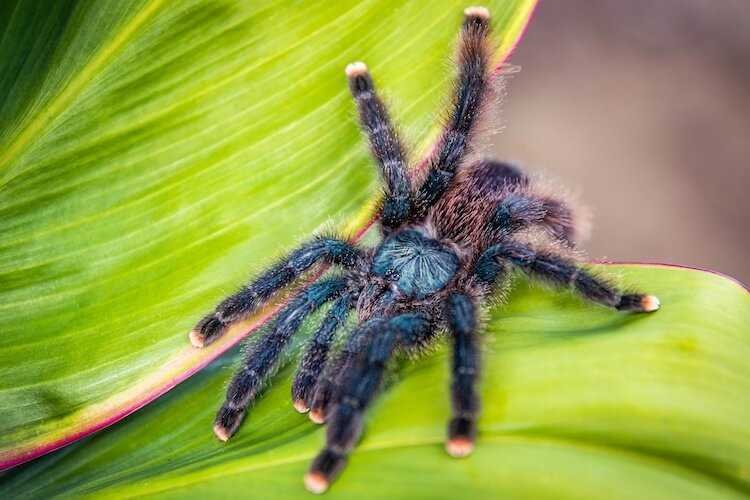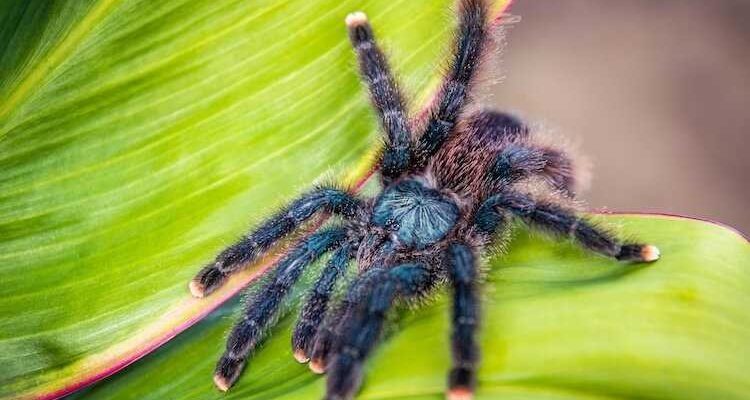
Caring for a Pink Toe Tarantula is different from owning a dog or a cat. You’ll need to create the right habitat, understand their feeding needs, and learn how to handle them (if you choose to). Don’t worry! We’re about to break it all down into bite-sized pieces. Whether you’re a seasoned pet owner or a curious beginner, let’s dive into the world of these beautiful creatures.
Understanding the Pink Toe Tarantula
Before we jump into care tips, it’s important to know what makes the Pink Toe Tarantula a little special. Scientific name: *Avicularia avicularia*, these charming arachnids hail from the lush rainforests of South America. Their colorful legs and docile nature make them an appealing choice for many enthusiasts.
Honestly, their appearance is what grabs most folks’ attention at first. With their dark bodies and striking pinkish toes, they look like they’ve stepped right out of a fantasy novel. They can live up to 10 years or more in captivity, so if you’re ready for a long-term commitment, this could be a great match for you.
You might be wondering how they get their name. Pink Toe Tarantulas are tree-dwelling spiders, which is quite different from many other tarantula species that prefer to live on the ground. This means they’re used to climbing, and they love to have space to do just that!
Creating the Perfect Habitat
When it comes to housing your Pink Toe Tarantula, getting it right is essential. Their habitat should mimic their natural rainforest environment as much as possible. Here’s how to set it up:
- Terrarium Size: A glass terrarium that’s at least 10-20 gallons will give your spider enough space to climb and explore. Add plenty of ventilation, as they require good airflow.
- Substrate: Use a mix of coconut fiber or potting soil to create a soft substrate for burrowing. Aim for about 3-4 inches deep since they do like to dig occasionally.
- Hiding Spots: Incorporate plants, logs, or commercial hides to let your spider feel secure. They enjoy having places to retreat to, especially during the day when they’re resting.
- Humidity and Temperature: Keep the humidity around 70-80% and the temperature between 75-85°F. A small water dish can help maintain humidity, but be cautious to avoid drowning.
Setting up their home is like creating a mini rainforest oasis. Just remember that having a comfortable environment is key to keeping your Pink Toe happy and healthy.
Feeding Your Pink Toe Tarantula
Feeding a Pink Toe Tarantula might seem a bit unusual, but it’s actually straightforward. These spiders are carnivorous and thrive on a diet of insects. Here’s what you need to know about their feeding habits:
- Diet Choices: Common food options include crickets, mealworms, and roaches. You can easily find these at pet stores or online.
- Feeding Schedule: Young spiders (slings) should be fed every few days, while adults can be fed once a week. Just don’t overfeed—less is more!
- Hydration: Provide fresh water in a shallow dish, and mist the enclosure lightly once or twice a week to keep humidity levels up.
Here’s the thing: Watching your tarantula hunt can be captivating! Their unique way of capturing and eating prey is like a little show happening right in front of you. It’s quite a sight—but don’t get too close; remember, they are still wild creatures.
Handling Your Pink Toe Tarantula
You might be excited to hold your new pet, but it’s crucial to approach this part with care. Pink Toe Tarantulas are generally more docile than other species, but they still can get stressed out easily. Here’s how to handle them safely:
- Wait for Acclimation: After bringing your tarantula home, give it time to adjust. Avoid handling for a few weeks until it feels settled.
- Gentle Handling: If you do choose to handle your spider, gently coax it onto your hand instead of grabbing it. A small, flat surface works well for this.
- Stay Calm: Keep movements slow and calm. Sudden motions can scare them, leading to potential stress or defensive behavior.
Honestly, it’s best to admire them from a distance whenever possible. They’re not like traditional pets that thrive on interaction, and that’s perfectly fine!
Common Issues and Solutions
Like any pet, Pink Toe Tarantulas can face challenges. Being aware of potential problems can help keep your new friend healthy and happy. Here are a few common issues:
- Molting Trouble: Molting is a natural process, but sometimes they can get stuck. Keep an eye out for signs, and maintain proper humidity to help them through it.
- Stress Signs: If your spider is hiding constantly or showing defensive behaviors (like raising its legs), it might be stressed. Check the environment, and ensure it’s not too loud or overly bright.
- Health Check: Look for signs of disease, such as lethargy or unusual behavior. If in doubt, consult an exotic pet vet.
Understanding these potential issues can help you be a more proactive and loving owner.
Keeping a Pink Toe Tarantula as a pet is a rewarding experience that connects you with the wonders of nature. They require a bit of effort in terms of care and habitat setup, but the satisfaction of watching them thrive is immense. Just remember to create the right environment, feed them appropriately, and handle them with care.
This journey isn’t just about having a pet; it’s about appreciating a unique creature that shares our world. As you learn more about your Pink Toe Tarantula, you might find yourself captivated by their quirks and behaviors. So, if you’re ready to take the plunge, don’t hesitate—embrace this adventure and enjoy the companionship of your new eight-legged friend!

